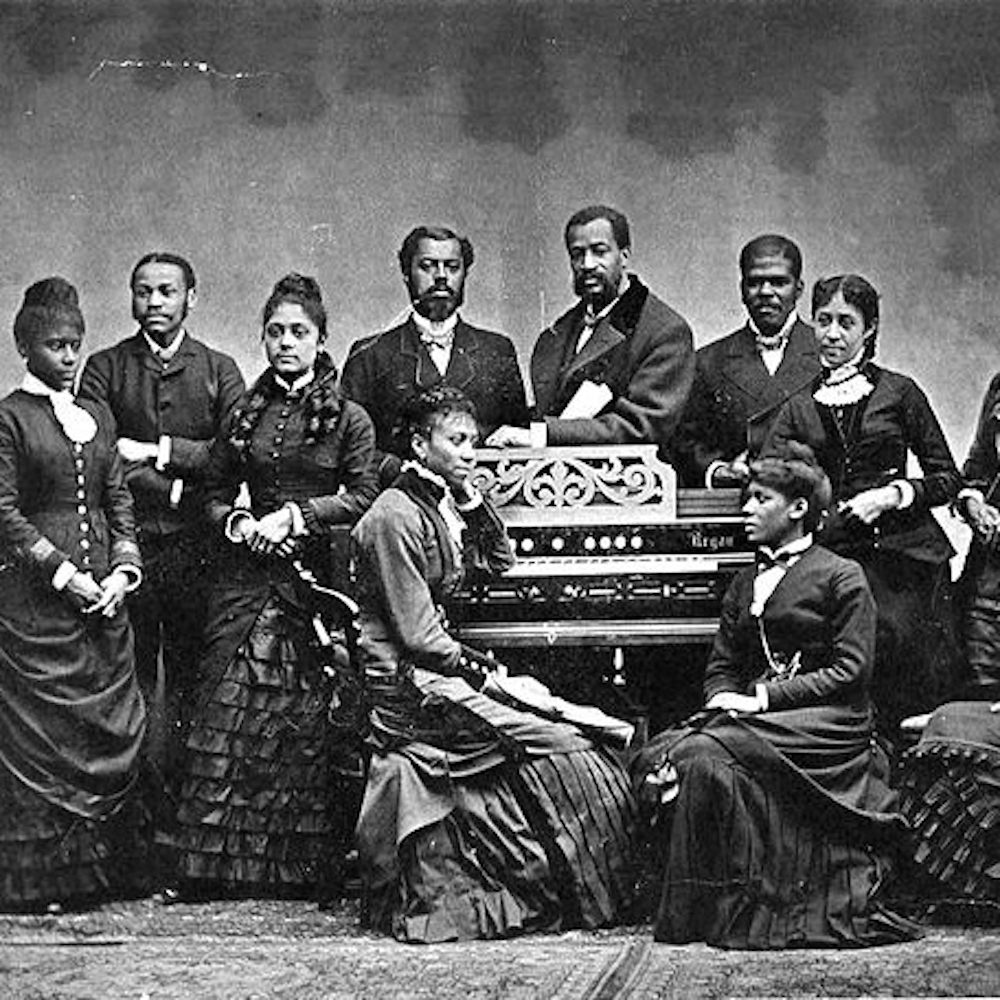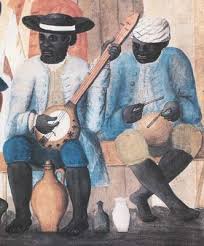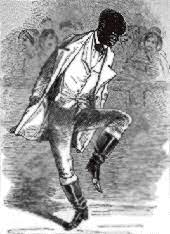By: Rayne Stewart & Ramya Cook
Major Music Genres in 1880-1899



Negro/Slave Spirituals
Historical Context
- Spirituals were initially developed on the plantations in the southern United States, but were later spread throughout the country and became an important part of African American musical and cultural heritage.
- These songs were often based on biblical themes and stories, but were also influenced by African musical traditions and cultural practices.
- Spirituals were a way for slaves to express their faith and find comfort and strength in the face of oppression and hardship.
- Many spirituals contained coded messages that could be understood only by other slaves, allowing them to communicate secretly and organize resistance to slavery.
- The first published collection of spirituals, “Slave Songs of the United States,” was compiled by William Francis Allen, Charles Pickard Ware, and Lucy McKim Garrison during the Civil War era.
- The popularity of spirituals grew during the Civil Rights Movement of the 1950s and 1960s, as African Americans used them to express their struggle for freedom and equality.
- Many famous musicians, including Mahalia Jackson, Paul Robeson, and Harry Belafonte, have recorded and performed spirituals, helping to popularize them around the world.
Spiritual vs. Hymn
- Spirituals are a form of religious music composed by African Americans during enslavement
- Hymns are strophic with rhythmic couplets and based on biblical scripture
Ring Shout
- A type of folk-spiritual gathering in praise houses with lead chorus singing, shouting and clapping/stomping while dancing around in a circle (developed with the great awakening and evangelical christianity)
- Used as a method of worship and celebration of the African form of christianity that embraced them as equal human beings
Arranged/Concert Spirituals
- Created by composers and documented with sheet music to be performed by large groups (choirs) or solo performers
- More organized than a typical spiritual and incorporated instruments (most often the piano)
Folk Music
Historical Context
- Black American folk music began with the era of enslavement (17th-19th century) when European slaveholders would force African people to perform their cultural music on the slave ships to lower the mortality rate of the slaves. It continued when they were placed on plantations for forced labor, where they used music as a form of communication and motivation.
- This genre of music is usually associated with other activities such as work, dancing, and storytelling by griots (West African poets). AA folk is characterized by themes of struggle, empowerment, and perseverance, commonly related to human rights.
- The development of black folk music took place in the southern region of the United States, where enslaved Africans were primarily held on plantations
- Folk songs are typically learned through hearing rather than reading, making it an oral traditional art form that is passed from generation to generation through families and close-knit rural communities.


Folk Instruments
- Banjo
- A West African stringed instrument made from logs covered with sheepskin. Played by enslaved Africans on ships for white entertainment. Originally called “banjar” before its appropriation, this was a staple instrument for the African American folk genre.
- Kora
- An instrument with 21 strings played with finger plucking and built with a gourd and cow skin. The kora’s sound resembles that of a lute and harp.
- Rhythm Bones
- One of the oldest African folk instruments, typically made of animal bones or wood and played with back and forth hand/finger motions.
- Washboard
- Was originally used as a cleaning tool by enslaved Africans who turned it into an instrument to keep spirits up during work time. Played with stroked along its ridges.
- Pattin Juba
- A dance style that uses the body as an instrument with rhythmic patting motions, stomping, and slapping motions. Also called hamboning.
- Call and Response
- A style of singing that features a main vocalist and background or response vocals. The main vocalist sings and the rest of the group responds in a typically repetitive manner. Used mainly in field hollers and work songs.
Field Hollers / Work Songs
- These songs were sung on the field by enslaved Africans (and incarcerated black people post-emancipation) as they did their fieldwork. They were often sung in a call-and-response format and incorporated biblical parables and folklore into the lyrics, expressed strong emotions, and served as a coping mechanism for enslaved Africans dealing with the grief of their forced migration and incarceration. They were also used to spread secret messages and communicate amongst themselves.
Performers
- Huddie Ledbetter was a popular folk singer of the 20th century who was known for his skill with the 12-string guitar and his role in the establishment of Folkways Records at the Smithsonian
- Odetta was a key figure in the African American folk music revival in the 1950’s-60’s and was a pioneer of the folk-blues scene. She also performed with a guitar and was known as the voice of the civil rights movement.
Folk Fashion and Influences
- The style of dress at this time resembled European victorian style clothing
- Women wore long dresses/skirts and blouses with puffed sleeves and men wore dress pants with suspenders or waistcoats and blazer-like jackets
- During enslavement, black people were dressed somewhat uniformly, with women wearing aprons and bonnets with long dresses to work and men wearing pants with button down shirts (often) white and sometimes suspenders and hats. Both typically genders wore leather shoes without buckles
- Folk music influenced many genres, including blues, jazz, and gospel music. Its influence can be seen in the soulful and emotional nature of blues music, which is similar to the emotion put into the lyrics of folk songs (especially work songs). A lot of blues music uses and draws inspiration from the spirituals, field hollers, and ballads of the African American folk music era.
- Rap music also draws inspiration from folk music which can be seen through its use of intricate wordplay and sampling of old folk songs (ex. Jay-Z’s song “The Story of O.J.” samples Nina Simone’s “Four Women”).


